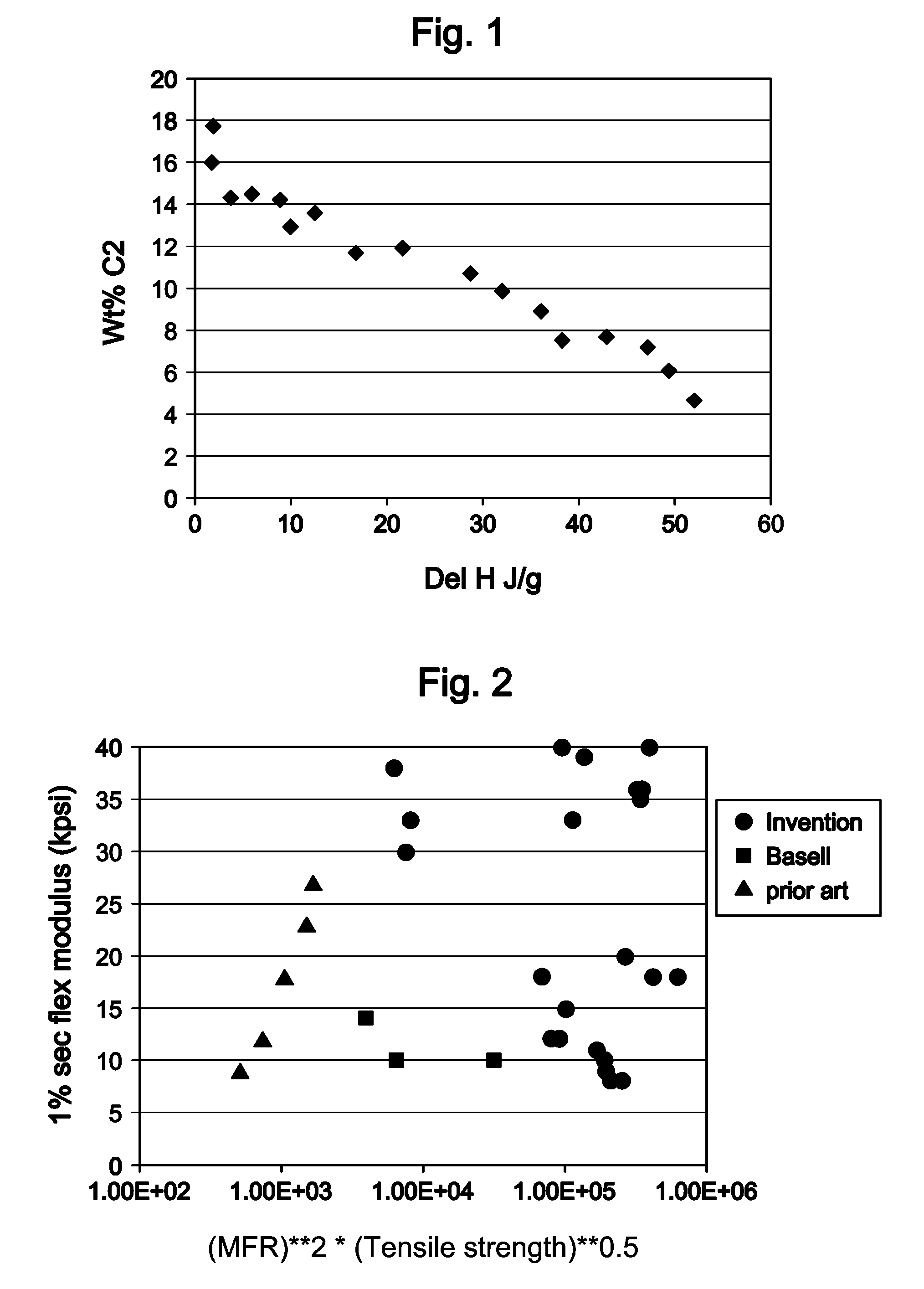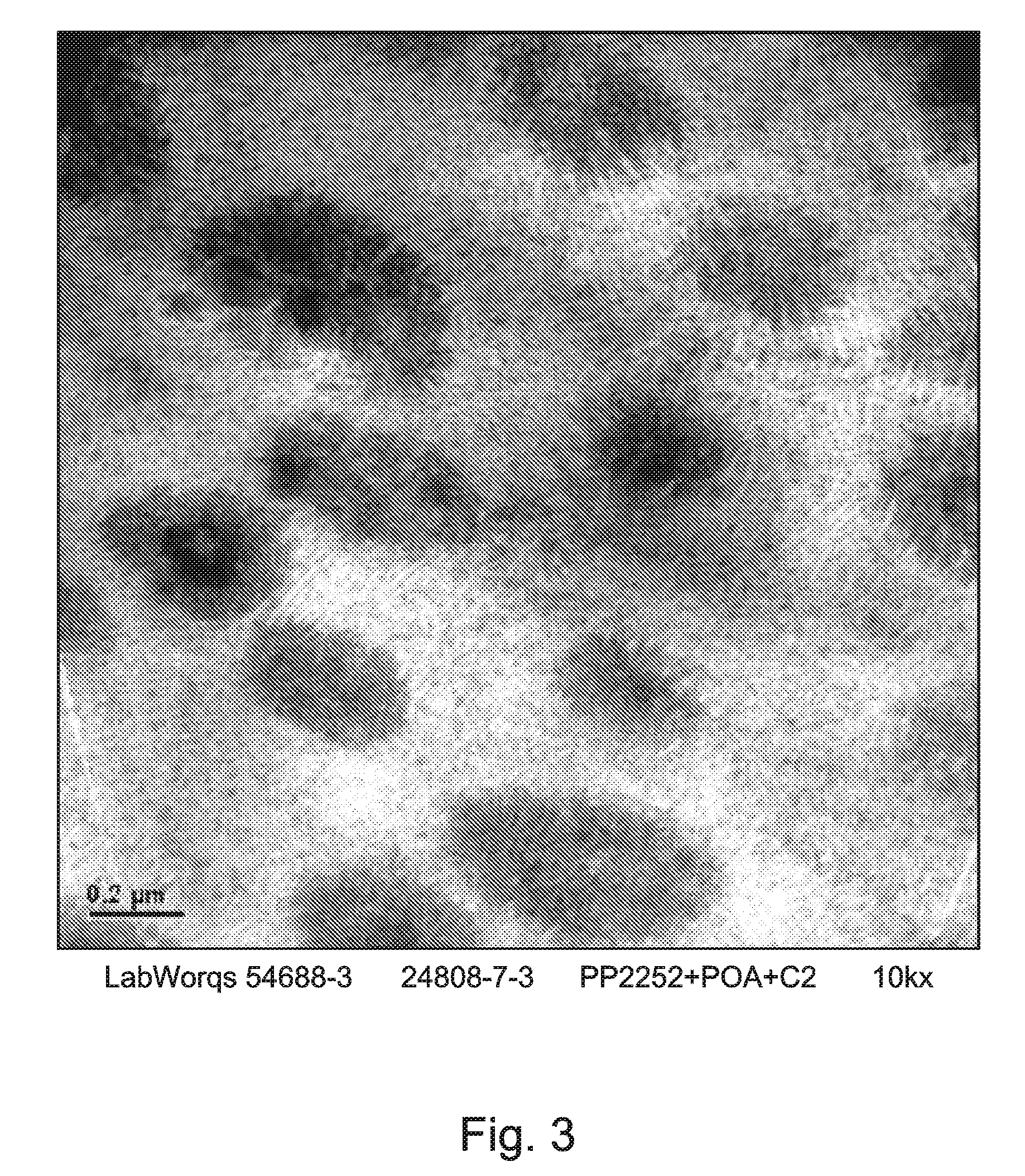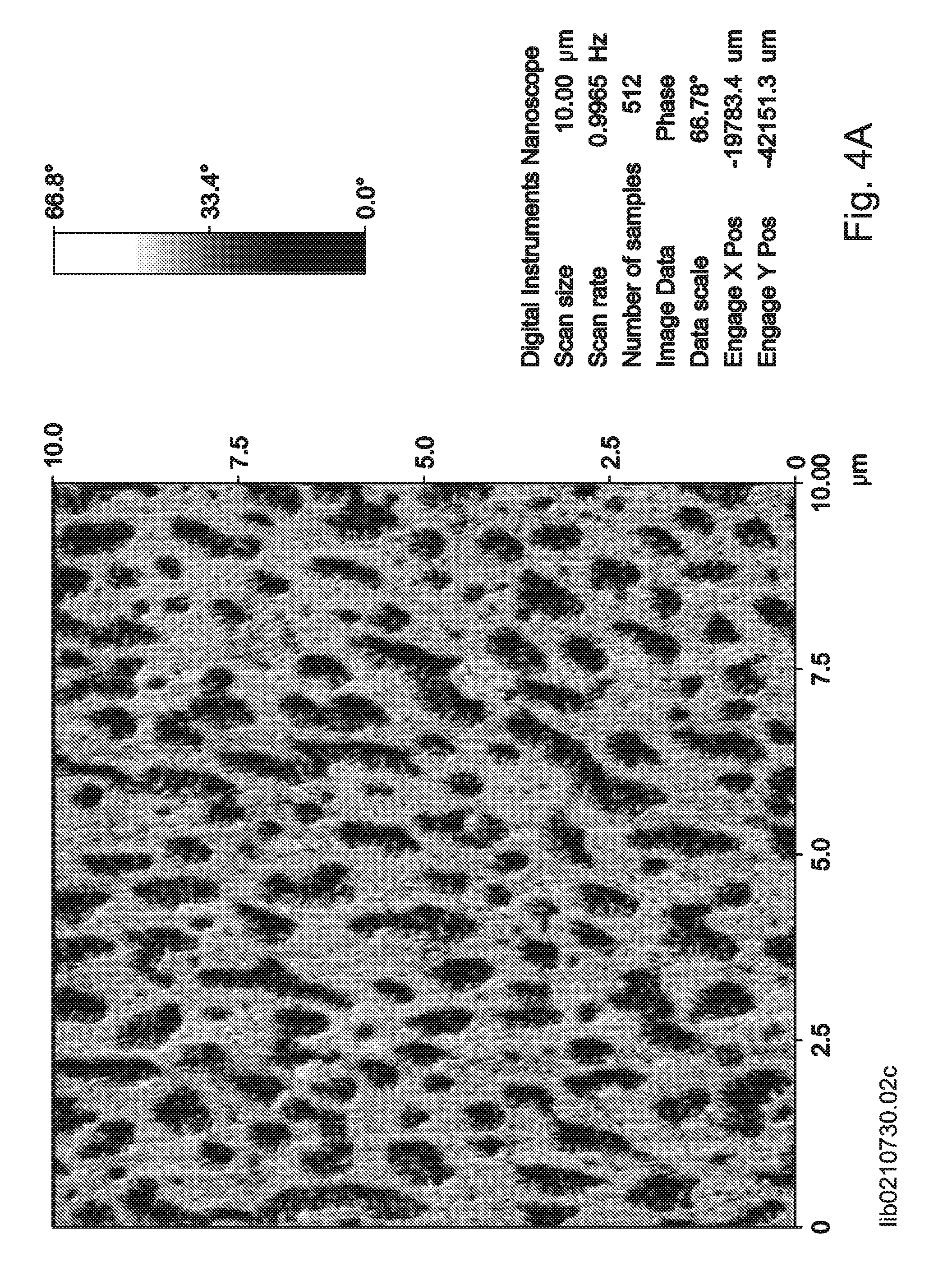Soft Homogeneous Isotactic Polypropylene Compositions
a polypropylene and composition technology, applied in the field of homogeneous polymer blends, can solve the problems that prior art systems could not produce a good balance of flexural modulus, tensile strength and elasticity, and achieve the effects of reducing brittleness, lowering tag and modulus, and increasing solids and pigment loading
- Summary
- Abstract
- Description
- Claims
- Application Information
AI Technical Summary
Benefits of technology
Problems solved by technology
Method used
Image
Examples
examples
Inventive Compositions: Sample Preparation: Pads and Parts.
[0265]Compression molding: Approximately 90 g of sample were placed in 8Δ×8″×125 / 1000″ thick metal frame between two sheets of Mylar in a heated press at 400 deg F. The sample is heated in compression between two metal plates about ½″ thick. The sample is pre heated for 15 minutes then pressed for 3 minutes at 15,000 psi. The sample is released and cooled under pressure of 2000 to 5000 psi for 4 minutes at 23 deg C.
[0266]The pads are removed and aged under controlled temperature and humidity conditions (50% relative humidity, room temperature) for 48 hours before the samples are of the testing geometry as specified in the test below are removed with a die.
[0267]MFR: Melt Flow rate was determined according to ASTM D-1238-04C at 230° C. and is reported as g / 10 min.
[0268]Flex Modulus Flexural modulus is determined as 1% secant according to D-790-0310618-05 and is reported as psi.
[0269]Brookfield Viscosity M...
PUM
| Property | Measurement | Unit |
|---|---|---|
| melting point | aaaaa | aaaaa |
| melting point | aaaaa | aaaaa |
| melting temperature | aaaaa | aaaaa |
Abstract
Description
Claims
Application Information
 Login to View More
Login to View More - R&D
- Intellectual Property
- Life Sciences
- Materials
- Tech Scout
- Unparalleled Data Quality
- Higher Quality Content
- 60% Fewer Hallucinations
Browse by: Latest US Patents, China's latest patents, Technical Efficacy Thesaurus, Application Domain, Technology Topic, Popular Technical Reports.
© 2025 PatSnap. All rights reserved.Legal|Privacy policy|Modern Slavery Act Transparency Statement|Sitemap|About US| Contact US: help@patsnap.com



